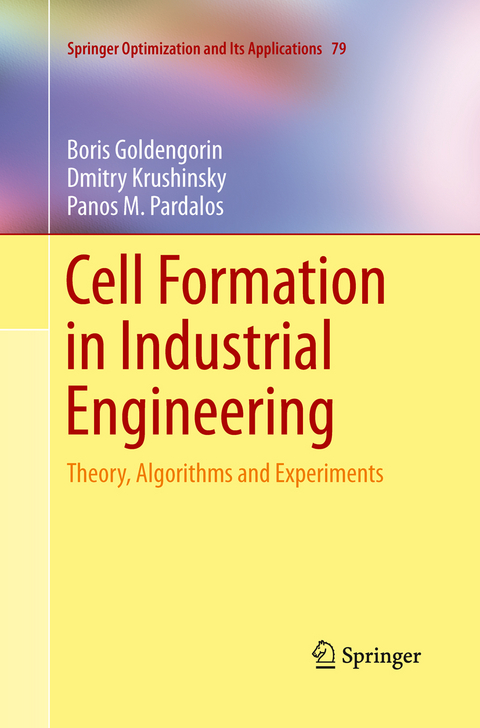
Cell Formation in Industrial Engineering
Theory, Algorithms and Experiments
Seiten
2015
|
Softcover reprint of the original 1st ed. 2013
Springer-Verlag New York Inc.
978-1-4899-8540-8 (ISBN)
Springer-Verlag New York Inc.
978-1-4899-8540-8 (ISBN)
This book focuses on a development of optimal, flexible, and efficient models and algorithms for cell formation in group technology. Its main aim is to provide a reliable tool that can be used by managers and engineers to design manufacturing cells based on their own preferences and constraints imposed by a particular manufacturing system. This tool could potentially lower production costs by minimizing other costs in a number of areas, thereby increasing profit in a manufacturing system.
In the volume, the cell formation problem is considered in a systematic and formalized way, and several models are proposed, both heuristic and exact. The models are based on general clustering problems, and are flexible enough to allow for various objectives and constraints. The authors also provide results of numerical experiments involving both artificial data from academic papers in the field and real manufacturing data to certify the appropriateness of the models proposed.
The book was intended to suit the broadest possible audience, and thus all algorithmic details are given in a detailed description with multiple numerical examples and informal explanations are provided for the theoretical results. In addition to managers and industrial engineers, this book is intended for academic researchers and students. It will also be attractive to many theoreticians, since it addresses many open problems in computer science and bioinformatics.
In the volume, the cell formation problem is considered in a systematic and formalized way, and several models are proposed, both heuristic and exact. The models are based on general clustering problems, and are flexible enough to allow for various objectives and constraints. The authors also provide results of numerical experiments involving both artificial data from academic papers in the field and real manufacturing data to certify the appropriateness of the models proposed.
The book was intended to suit the broadest possible audience, and thus all algorithmic details are given in a detailed description with multiple numerical examples and informal explanations are provided for the theoretical results. In addition to managers and industrial engineers, this book is intended for academic researchers and students. It will also be attractive to many theoreticians, since it addresses many open problems in computer science and bioinformatics.
1. The problem of cell formation.- 2. The p-Median problem.- 3. Application of the PMP to cell formation in group technology.- 4. The minimum multicut problem and an exact model for cell formation.- 5. Multiobjective nature of cell formation.- 6. Pattern-based heuristic for the cell formation problem in group technology.- 7. Branch-and-bound algorithm for bi-criterion cell formation problems.- 8. Summary and conclusions.- A. Solutions to the 35 CF instances from [71].- Index.- References.
| Erscheinungsdatum | 23.09.2017 |
|---|---|
| Reihe/Serie | Springer Optimization and Its Applications ; 79 |
| Zusatzinfo | XIV, 206 p. |
| Verlagsort | New York |
| Sprache | englisch |
| Maße | 155 x 235 mm |
| Themenwelt | Mathematik / Informatik ► Informatik ► Theorie / Studium |
| Informatik ► Weitere Themen ► CAD-Programme | |
| Mathematik / Informatik ► Mathematik ► Algebra | |
| Mathematik / Informatik ► Mathematik ► Analysis | |
| Mathematik / Informatik ► Mathematik ► Angewandte Mathematik | |
| Wirtschaft ► Betriebswirtschaft / Management | |
| ISBN-10 | 1-4899-8540-9 / 1489985409 |
| ISBN-13 | 978-1-4899-8540-8 / 9781489985408 |
| Zustand | Neuware |
| Haben Sie eine Frage zum Produkt? |
Mehr entdecken
aus dem Bereich
aus dem Bereich
Buch | Softcover (2023)
Beuth (Verlag)
99,00 €
Einführung in die Geometrische Produktspezifikation
Buch | Softcover (2023)
Europa-Lehrmittel (Verlag)
20,70 €


